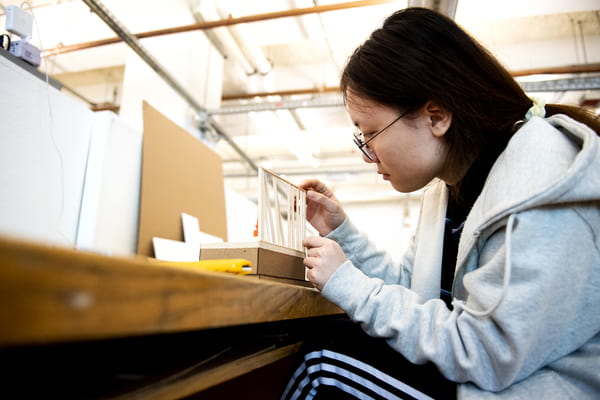2015 Issue
This 2015 issue includes a record six articles from three institutions that explore a variety of salient topics. We are delighted that this issue is three times larger than any of our previous ones and hope this will inspire others to submit articles for consideration in 2016. The articles below have been chosen based on thorough evaluation.
Information about the submission process for the 2016 issue is available under the “Submit Paper” tab.
We invite you to read each article and see for yourself the exciting future of our field!
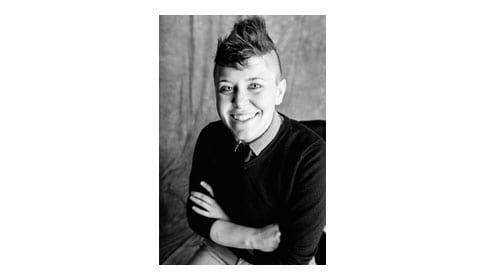
"Educational Interpreters and Early Childhood Development Training" Abstract
This article examines current standards for educational interpreters, specifically those working in the primary school setting. The author evaluated these standards and tried to find solutions that would help interpreters more effectively serve their deaf and hard of hearing consumers. Nida and Taber’s (1969) definition of “dynamic equivalence” is used as the foundation of this paper and is considered alongside the current literature of early childhood development. The literature is summarized and applied in order to make a case for additional training that could improve interpreter effectiveness within this setting. Interpreters seeking to render dynamically equivalent interpretations need to have a more in-depth understanding of early childhood development in order to match the teaching goals of early childhood educators. Possible future requirements are suggested as well as further research opportunities that should be pursued in order to determine the effectiveness of this additional training in helping interpreters match the goals of early childhood educators.
Sam Freeman, BFA, is currently seeking a second Bachelor’s in ASL-English Interpretation at Columbia College Chicago. Her first degree was a BFA in Theatre from New York University in 2009. Her anticipated graduation date is May 2016. During her time at Columbia, Sam has worked as a Lab Assistant in the department’s ASL Lab. Outside of school, she has been actively involved in the interpreting community and holds memberships with both the Registry of Interpreters for the Deaf (RID) and it’s affiliate chapter in Illinois (IRID). She has served as a support staff conference volunteer at both the state and national levels. Sam has also attended several other workshops and conferences in order to pursue professional development opportunities. Most recently, she authored a motion to amend IRID’s Bylaws to allow for a student representative on IRID’s Board of Directors. She will serve as one of Columbia’s representatives on the student committee that IRID is in the process of forming.
Correspondence regarding this article should be sent to Sam Freeman at Samcfreeman888@gmail.com.

"Gendered Communication and Speaking Styles Related to Sign Language Interpreting" Abstract
Sex and gender are involved in any interaction. Sex is biologically determined while gender has more fluidity, and clues of gender affiliation can be found in conversation. Gendered communication and linguistic styles feature qualities of dominance or difference and appear in the early years of childhood. By analyzing gender-homogeneous and heterogeneous groups and dyad interactions between children and adults, it is found that the certain traits that correspond with each gender stereotype are consistently held from childhood to adulthood. It is important for sign language interpreters to be aware of linguistic styles to be able to best reflect the Deaf individual. Deaf individuals need to be aware of the impact of gender on communication to best navigate the hearing world. Communication failures in a sign language interpretation can happen easily and often without the proper knowledge of gender communication differences, communicating between same sex and intersex groups, and cultural norms of communicating between same sex and intersex and individual persons.
Chloe Joanne Mayo, high school graduate of Shattuck-St. Mary’s in Faribualt, Minnesota class of 2010, is a junior in the Sign Language Interpreting program at Augustana College in Sioux Falls, South Dakota. This paper was prepared for Interpretation 1, INTR 340, taught by Marlee Dyce.
Correspondence regarding this article should be sent to Chloe J Mayo at cmayo11@ole.augie.edu.

"Interpreter Experience and the Use of Constructed Action" Abstract
American Sign Language (ASL) is a linguistically complex, visual language that functions independently of spoken language. One feature of ASL that is particularly interesting is constructed action, which is often used within the language for clarity in narrative form. While linguistic researchers have recently begun to study the usage of this phenomenon by native ASL users, none has yet addressed its use among second language users (L2) and, more specifically, sign language interpreters. It is thought that L2 interpreters with a greater amount of experience in the field produce ASL in a more “native-like” manner than novice interpreters, so it would follow that they employ constructed action more frequently in their work. In this study, the researchers analyze constructed action usage among interpreters who have varying degrees of experience in the field, and seeks to answer the following questions: Do years of experience of a given interpreter affect the frequency with which that interpreter uses constructed action? Does the frequency with which interpreters use constructed action differ at different time segments in a given text (i.e., beginning, middle, or end)? While the researchers did not find evidence that years of experience influence the use of constructed action, their study provides evidence that the frequency with which constructed action is used does differ according to time segments in a given text. Use of constructed action at the beginning of a text seems to predict subsequent use of constructed action at the end of the text.
Sara Garcia, originally from Stoneham, Massachusetts, graduated from Northeastern University in 2015 with a Bachelor of Science degree in American Sign Language/English Interpreting. Sarah would like to thank her peers and professors for all of their support through her years at Northeastern. She would like to give a special thanks to Dennis Cokely, Angela Herbert, and Benjamin Wiedmaier for their continued guidance and support. She hopes that this research will inspire other interpreters to analyze the process of interpreting and gain a clearer understanding of this unique profession. Correspondence regarding this article should be sent to Sarah Garcia at garcia.sar@husky.neu.edu.
Jenna Gorman graduated from Northeastern University cum laude in 2015 with a Bachelor of Science degree in American Sign Language/English Interpreting. She would like to extend a heartfelt thanks to her professors and fellow classmates for their support and encouragement throughout her time at Northeastern. Jenna would also like to give special thanks to Dr. Dennis Cokely, Angela Herbert, and Dr. Benjamin Wiedmaier, without whose time, guidance, and expertise this research would not have been possible. Correspondence regarding this article should be sent to Jenna Gorman at jenna.eckenrode@gmail.com.
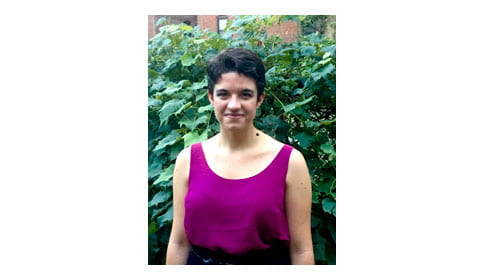
"Patterns of Informality in Spoken English Interpretation" Abstract
This study is meant to draw attention to the implications within formality of spoken English interpretations. This study looks for patterns of six specific informality markers across interpreters with varying levels of experience. The interpreters involved are five graduates of the American Sign Language (ASL) program at Northeastern University. For this study, seven out of eighteen minutes of each interpreter’s work were analyzed to determine the frequency of the informality markers. The study found that the most prevalent informality marker across the sample is the use of conjunctions to begin and/or end a sentence. The study also found that all five interpreters used the most markers in one of two sections, in either the ninth or fifteenth minute. It is possible that this could be explained by processing time, but more research must be done to claim causation. The results of this study may be helpful in understanding practical ways interpreters can improve, and in doing future research.
Meghan McCombs graduated from Northeastern University in May 2015 with a Bachelor of Science in American Sign Language/English interpreting. Though originally from New Jersey, Meghan remains in Boston after graduation, with plans of becoming an ASL interpreter in the Greater Boston area. Meghan’s fascination with the appropriation of language lead her to analyze the interpretations in this study, and she plans to further study the data used in this research. Her intentions include determining what the specific implications of the informal language used in these data are, and how the interpretation influences all participants in an interaction.
Correspondence regarding this article should be sent to Meghan K. McCombs at mccombs.m@husky.neu.edu.
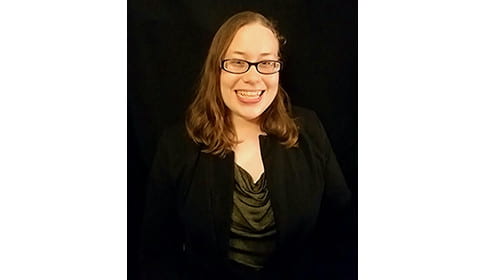
"Replicating 'Interpreting Culturally Rich Realities: Research Implications for Successful Interpretation" Abstract
In 2001, Dennis Cokely, Ph.D., CSC published an article focusing on English words that have taken on “Deaf-centered” meanings for interpreters. The results from the study showed that although interpreters have acquired the frames necessary to comprehend culturally rich realities, those for whom the interpretation is intended, more than likely, have not acquired those same frames. Almost thirteen years later, the main purpose and aim for replicating the original study was to see if and how the general population’s perception of American Sign Language (ASL) has changed.
Brittany Patten grew up with a younger sister who is deaf. Inspired by her sister, she decided to pursue an interpreting career and enrolled at Northeastern University in 2011. Brittany graduated summa cum laude in 2014 with a Bachelor of Science in American Sign Language/English Interpreting and Linguistics; she has continued on, obtaining her Master of Education in Language and Literacy from Harvard University. She would like to thank all of her teachers and fellow classmates at Northeastern for their support and guidance on her journey to become an interpreter, and she hopes this research will inspire interpreters to continuously work on and improve their skills. Correspondence regarding this article should be sent to Brittany Patten at brittany@aslgirls.org.
Jacqueline Fernaays, born and raised in Marion, New York, moved to Massachusetts in the fall of 2010 to attend Northeastern University and graduated in 2014 with a Bachelor of Science in American Sign Language/English Interpreting. Jacqueline would like to thank all of the staff at Northeastern, along with her mentors and peers, for helping her development and growth as a young professional. Correspondence regarding this article should be sent to Jacqueline Fernaays at jfernaays@gmail.com.
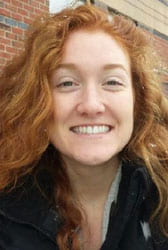
"Working with American Sign Language Interpreters in K-12 Schools: A Pilot Study" Abstract
This pilot study aims to identify what information, if any, K-12 teachers receive prior to working with an American Sign Language (ASL) interpreter within Massachusetts’ public schools. Participants responded through an online survey in which questions were asked regarding the material they received, an assessment of the success of their interpreted interaction, and their overall experience with ASL interpreters. The study identifies common themes regarding the preparedness of faculty members, and identifies ways of improving interactions overall. In general, this research showed that K-12 teachers had a false perception of communicative success. However, due to the low number of responses, subsequent studies are required in order to draw definitive conclusions. With the goal of improving the quality of access for Deaf students, this research presents ideas for future research regarding how to better prepare teachers working with interpreters in K-12 schools.
Key Words: American Sign Language, ASL, Interpreting, ASL Interpreting, K-12, Massachusetts, elementary schools
Krystal Chung, born and raised in New Jersey, moved to Boston to pursue her education. She attended Northeastern University and graduated in 2015 with a Bachelor of Science in American Sign Language/English Interpreting. She would like to thank her teachers, peers, and mentors for their endless guidance and support throughout her time at Northeastern. She would also like to thank the Boston Deaf community for reminding her everyday of why she entered into the interpreting profession. She hopes that this pilot study will be the impetus for future research and can help to create positive change within the field. Correspondence regarding this article should be sent to Krystal Chung at krystalc012@gmail.com.
Lindsey Schick, originally from California, moved to Boston to become part of Northeastern’s esteemed interpreting program. She graduated cum laude and received her Bachelor of Science in ASL/English Interpreting in May of 2015. Without the incredible support of her family, Northeastern, and especially Dennis Cokely and Angela Herbert, this research would not have been possible. She hopes the research is continued, and that the pilot study will evoke change in the near future. Correspondence regarding this article should be sent to Lindsey Schick at schicklindsey@aol.com.
